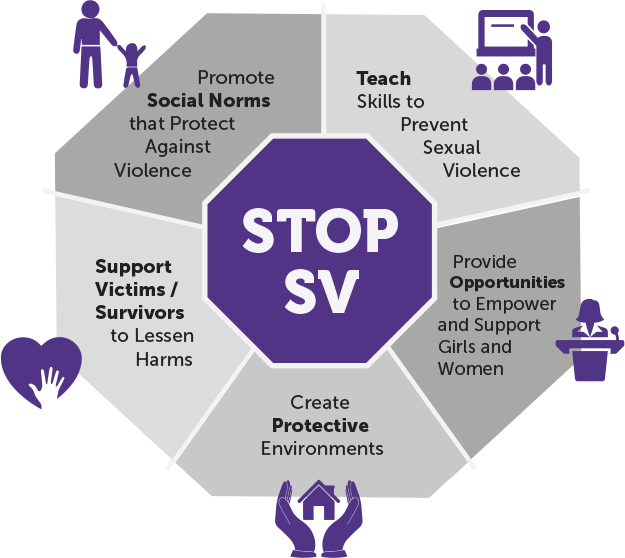Sexual Violence
Sexual violence is any type of sexual activity committed against someone without that person’s freely given consent. The activity can be verbal, visual, or anything that forces a person to engage in unwanted sexual contact or attention.
The use of “sexual violence” here encompasses all forms of sexual abuse, assault, and harassment, including:
SILENCE IS NOT CONSENT.
Sometimes victims are too scared, disoriented, or shocked to fight back or say no. Anyone can experience or perpetrate sexual violence. The perpetrator of sexual violence is usually someone the victim knows, such as a friend, current or former intimate partner, coworker, neighbor, or family member. In Kentucky, almost 90% of all sexual violence is perpetrated by someone known to the victim.[1]
Many survivors of sexual violence encounter poor responses from the systems and people they interact with, such as victim blaming, disbelief, shame, and minimization, which can be retraumatizing. Survivors of sexual violence who belong to historically oppressed social groups encounter additional barriers to justice, healing, safety, validation, education, and more.
How big is the problem?
Sexual violence is a serious public health problem in Kentucky.
39.1%
of KY women will experience contact SV in their lifetimes
18.3%
of KY men will experience contact SV in their lifetimes
23.3%
of Kentucky women will experience completed or attempted rape in their lifetimes
With rates of victimization among male and female Kentuckians significantly higher than the national average. In Kentucky, almost 2 in 5 women (39.1%) and 1 in 5 men (18.3%) will experience contact sexual violence in their lifetimes.[1]
Data on the age of first completed rape victimization among Kentucky women shows that 13.9% were 10 and under, 32.2% were 11-17, 36.0% were 18-24, and 17.9% were 25 and older.[1]
Kentuckians also have their first experience of sexual violence victimization at a younger age than the national average.
Almost half of KY female survivors were first raped before the age of 18
What is the impact of sexual violence?
We know that sexual violence has serious, long-lasting impacts on victims, their friends and families, their communities, and society as a whole.
An assault may impact a survivor’s daily life no matter when it happened. Each survivor reacts to sexual violence in their own way. Common emotional, physical, and psychological reactions include: Guilt, shame, fear, numbness, shock, and feelings of isolation. Personal injuries, concerns about pregnancy, or risk of contracting a sexually transmitted infection. Post-traumatic stress disorder, anxiety, depression, and isolation.
Sexual violence can affect parents, friends, partners, children, spouses, and/or coworkers of the survivor. As they try to make sense of what happened, loved ones may experience similar reactions and feelings to those of the survivor such as fear, guilt, self-blame, and anger.
Schools, workplaces, neighborhoods, campuses, and cultural or religious communities may feel fear, anger, or disbelief when sexual assault happens in their community. Violence of all kinds destroys a sense of safety and trust.
Sexual violence also creates a cost to society. A recent study from the Centers for Disease Control and Prevention found that individual victims of rape incur $122,461 over a lifetime in costs associated with lost wages, health, criminal justice, and property damage.[2] The lifetime cost of sexual and intimate partner violence in Kentucky is estimated to be over $211 billion.
How can we stop sexual violence before it starts?
We can stop violence before it starts through high-quality primary prevention work. The CDC has identified five focus areas for effective sexual violence prevention:

[1] Smith, et al. (2017). The National Intimate Partner and Sexual Violence Survey (NISVS): 2010-2012 State Report. Atlanta, GA: National Center for Injury Prevention and Control, Centers for Disease Control and Prevention. https://www.cdc.gov/violenceprevention/pdf/nisvs-statereportbook.pdf
[2] Peterson, et al. (2017). Lifetime Economic Burden of Rape Among U.S. Adults. Am J Prev Med 52(6): 691-701. https://www.ncbi.nlm.nih.gov/pmc/articles/PMC5438753/pdf/nihms849041.pdf
